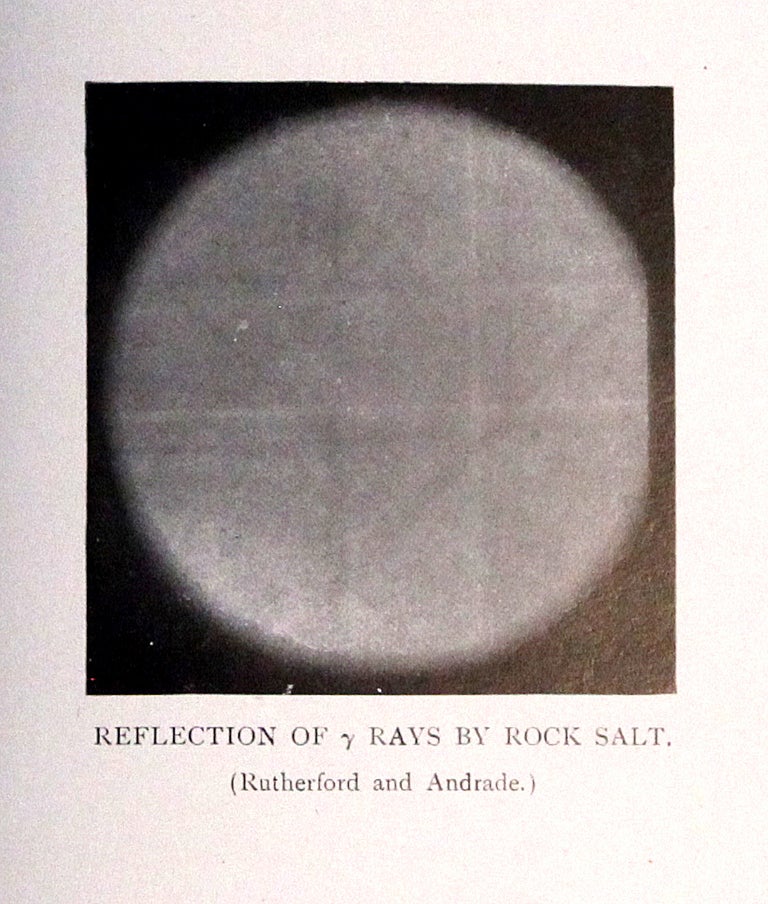
X rays and crystal structure
London: G. Bell and Sons, Ltd, 1915. 8vo. vii, [i], 228, [2] pp., including half-title and index, plus 2 pages publisher’s advertisements. FIRST EDITION. Printer’s device on title. With 5 photographic plates. Numerous text diagrams, charts, tables. Original publisher’s blue cloth, gilt lettering on spine, faded, quarter-inch of cloth at foot of spine missing, joints loose, otherwise a good copy with “PRESENTATION COPY” blind-stamped onto title. From the library of Arnold Thackray with his bookplate on the paste-down, and another bookplate laid in noting that this book was Exhibit No. 241 in the 1951 Festival of Britain Exhibition of Books, arranged by the National Book League at the Victoria & Albert Museum. Item #14667
X-RAY CRYSTALLOGRAPHY. First edition of the statement of Bragg’s Law, by the father and son team who shared the 1915 Nobel Prize for physics “for their services in the analysis of crystal structure by means of x-rays.” Concentrating on the knowledge of atomic structure that x-ray provides, the Braggs virtually gave the science of crystallography a new basis, making way for Moseley’s reconstruction of the period table and the discovery of DNA (see PMM). Their original short paper on the subject had been published in the Proceedings of the Royal Society, Vol. 88, pp. 428-438, 1913.
William H. Bragg (1862-1942) and William L. Bragg (1890-1971) were the leading researchers in the new field of x-ray structural analysis that Max von Laue (1879-1960), who also won the Nobel Prize in 1914, had established, and which had developed into an important branch of physics and chemistry. “Von Laue had discovered the wave nature of x-rays. The problem was then taken up in several quarters. The Braggs used a method of electric registration, based upon the property of x-rays to make the air conducting. Thanks to the pioneer work of the Braggs, the structure of a large number of simple substances was elucidated, and a firm foundation was laid for future research, which soon resulted in detailed knowledge of the structure of solids” (Nobel, the Man & his Prizes, pp. 434-435).
Price: $1,950.00



